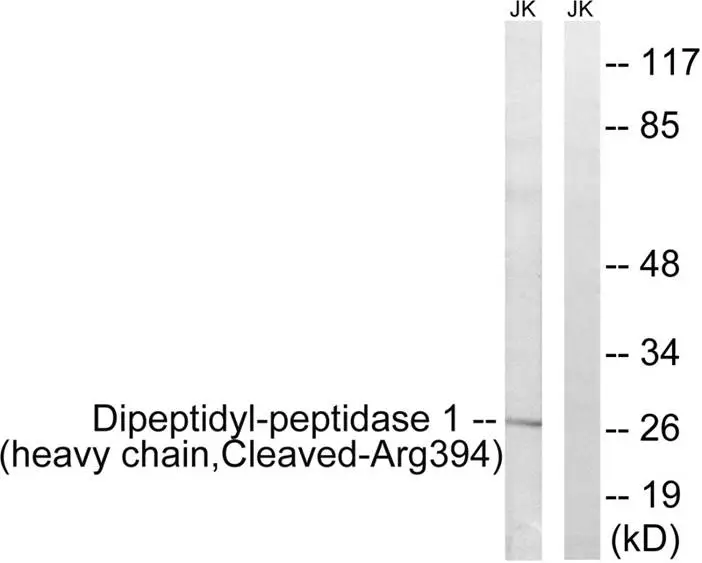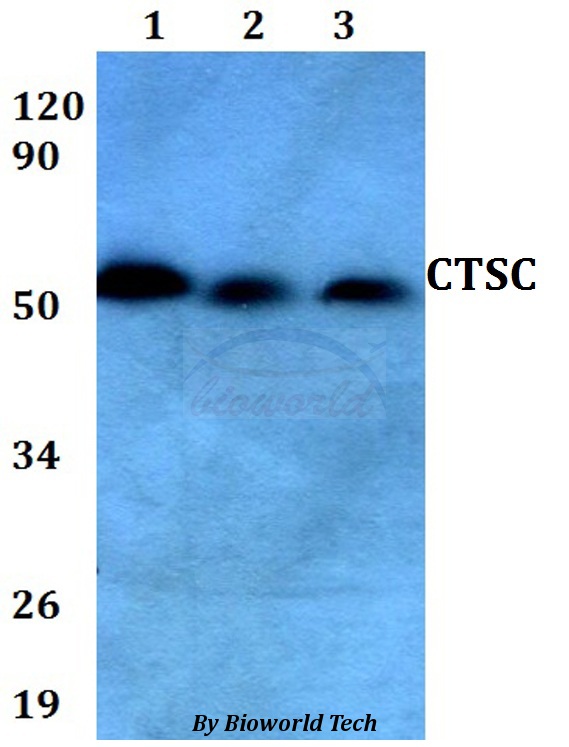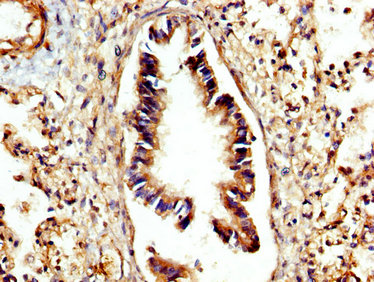
WB analysis of Jurkat cells treated with etoposide 25uM (1h) lysate using GTX86919 Cathepsin C (cleaved Arg394) antibody. The lane on the right is blocked with the synthesized peptide.
Cathepsin C (cleaved Arg394) antibody
GTX86919
ApplicationsWestern Blot
Product group Antibodies
ReactivityHuman
TargetCTSC
Overview
- SupplierGeneTex
- Product NameCathepsin C (cleaved Arg394) antibody
- Delivery Days Customer9
- Application Supplier NoteWB: 1:500~1:1000. *Optimal dilutions/concentrations should be determined by the researcher.Not tested in other applications.
- ApplicationsWestern Blot
- CertificationResearch Use Only
- ClonalityPolyclonal
- ConjugateUnconjugated
- Gene ID1075
- Target nameCTSC
- Target descriptioncathepsin C
- Target synonymsCPPI, DPP-I, DPP1, DPPI, HMS, JP, JPD, PALS, PDON1, PLS, dipeptidyl peptidase 1, cathepsin J, dipeptidyl transferase, dipeptidyl-peptidase I
- HostRabbit
- IsotypeIgG
- Protein IDP53634
- Protein NameDipeptidyl peptidase 1
- Scientific DescriptionThis gene encodes a member of the peptidase C1 family and lysosomal cysteine proteinase that appears to be a central coordinator for activation of many serine proteinases in cells of the immune system. Alternative splicing results in multiple transcript variants, at least one of which encodes a preproprotein that is proteolytically processed to generate heavy and light chains that form a disulfide-linked dimer. A portion of the propeptide acts as an intramolecular chaperone for the folding and stabilization of the mature enzyme. This enzyme requires chloride ions for activity and can degrade glucagon. Defects in the encoded protein have been shown to be a cause of Papillon-Lefevre syndrome, an autosomal recessive disorder characterized by palmoplantar keratosis and periodontitis. [provided by RefSeq, Nov 2015]
- ReactivityHuman
- Storage Instruction-20°C or -80°C,2°C to 8°C
- UNSPSC12352203






